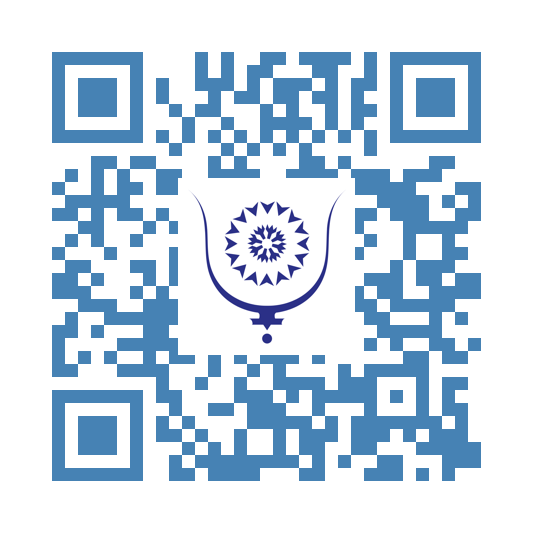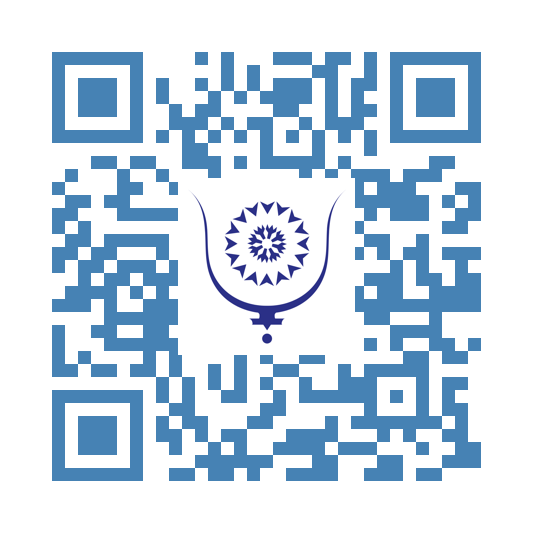Ley Lines: The Invisible Currents of Earth’s Sacred Geometry
32
The concept of ley lines suggest the existence of invisible pathways of energy that crisscross the Earth, forming a network of subtle energy, ancient alignment, and spiritual resonance. Though the term “ley line” was first coined in 1921 by the English antiquarian Alfred Watkins (1855-1935)—who noticed that many ancient sites in the British landscape aligned along straight tracks—the concept is even older, echoing geomantic traditions across cultures that recognized the Earth as a living, breathing being with its own circulatory system of sacred force.
Basically, ley lines are believed to be channels of Earth's energy—similar to meridians in Traditional Chinese Medicine (TCM)—which connect sites of spiritual, astronomical, and historical significance. These may include standing stones, megalithic temples, pyramids, cathedrals, burial mounds, and crossroads. In the East, these currents are known as dragon lines or "lung mei" in Chinese geomancy (feng shui), while in South America, the Inca referred to similar energetic pathways as "ceques", radiating outward from the Coricancha Temple in Cusco.
From an esoteric standpoint, ley lines are neither arbitrary nor merely symbolic. They are understood to follow the electromagnetic shape of the planet—interacting with telluric currents, magnetic anomalies, and planetary grid systems. At certain points where multiple ley lines intersect, energy becomes concentrated, forming what are known as power nodes or vortex points. These nodes are believed to amplify consciousness, enhance ritual, facilitate spiritual contact, and sometimes thin the veil between the seen and unseen worlds. Places such as Stonehenge, the Giza Plateau, Machu Picchu, Glastonbury Tor, and Mount Shasta are frequently cited as residing on these potent intersections.
Mystically, ley lines represent more than geological curiosity—they are conduits of planetary consciousness, arteries of Gaia herself. In Hermetic and occult traditions, the Earth is viewed as a macrocosmic body, complete with chakras, nadis, and energetic organs. Just as the human body channels prana through subtle pathways, so too does the Earth transmit vital energy through her leys. To walk these lines consciously, or to work magically upon them, is to participate in the planet’s own alchemical process—aligning human intention with terrestrial intelligence.
In this context, the concept of ley lines resonates with the Gaia Theory, proposed by James Lovelock (1919–2022) and Lynn Margulis (1938–2011). This theory pictures Earth as a self-regulating, living system in which the biosphere, atmosphere, geosphere, and hydrosphere are deeply interconnected. Just as Gaia Theory suggests that the planet maintains balance through feedback loops, ley lines can be seen as subtle energetic channels through which this regulation occurs. From an esoteric perspective, these currents mirror Gaia’s own physiological processes—arteries circulating life-force and sustaining the interdependence of all beings within the planetary organism.
Many practitioners of geomancy, dowsing, and ritual magick believe that ley lines can be activated or aligned through offerings, ceremonies, sound, and sacred architecture. Temples and churches built upon these lines often reflect celestial alignments, forming a harmony between heaven and earth. Some traditions hold that ancient initiates placed monuments at ley crossings not merely as markers, but as resonant structures designed to stabilize or modulate the flow of planetary energy.
There is also a mythical and cosmological layer to ley line theory. In Arthurian legends, Glastonbury is not only a place on a map but a threshold to Avalon—an invisible world accessible through altered states or alignment with the land’s living current. In this way, ley lines serve as the nervous system of a planetary intelligence, a kind of spiritual cartography through which initiates navigate both terrestrial and cosmic realities.
Though scientific consensus does not validate ley lines as measurable phenomena, their enduring presence in sacred geography, myth, and ritual suggests they function on a level beyond conventional empiricism. They invite the sensitive and the intuitive to perceive the Earth not as inert matter, but as a divine organism—alive, aware, and in communion with those who learn to walk her lines in reverence.
Share:
Ley Lines: The Invisible Currents of Earth’s Sacred Geometry
copy:
https://bluwr.com/p/341332064
Legislative Elections 2026 in Morocco: A Democratic Challenge Driven by Royal Initiative
226
His Majesty King Mohammed VI has officially tasked the Ministry of the Interior with preparing the 2026 legislative elections. This decision, announced in the 26th Throne Speech, represents both a solemn directive and a particular vote of confidence in the ministry. By the end of the year, the ministry is expected to have finalized the legal and organizational framework for the election.
Following this, Mr. Abdelouafi Laftit convened the main political parties for inclusive consultations aiming to guarantee a "model," transparent, and credible election, in accordance with royal instructions. This approach reflects a clear desire to strengthen the organization of elections by removing them from the direct influence of the government, particularly its head, Mr. Aziz Akhannouch, who is also president of the RNI party. This party is seen as having significant influence over the electoral process. Entrusting this mission to the Ministry of the Interior, recognized for its role as an institutional arbiter, aims to limit direct political interference and prevent any attempt to capture the vote by certain actors in power.
During the meeting, the minister emphasized the necessity for the elections to be "exemplary" and suggested that significant effort would be made to meet democratic and institutional expectations—implying that everything will be done to strictly implement the royal will, while distancing from all political factions.
A new electoral code specific to the House of Representatives is therefore being prepared, with an adoption planned before the end of 2025. The ongoing reflections and discussions address several key areas: updating or simplifying voter lists, with reliance solely on identity cards to identify voters; the moralization and regulation of campaign financing through stronger control, possibly including caps on candidate and party spending. Better transparency and a review of electoral districts based on the latest census are also on the agenda. The issue of the number of polling stations—which exceeded 40,000 in the last election—should also be discussed, as well as the representation of approximately 6 million Moroccans living abroad.
The current voting system, based on proportional representation by lists, could also be reconsidered to address shortcomings observed in 2021, particularly the tendency to favor "kingmakers" of deputies and local clientelism, often fueled by money.
Within the political sphere, there is rather a radio silence. The impression is that political parties are either indifferent or strategically cautious. The debate and torrent of ideas are thus taking place among commentators and other writers. There is a shared feeling that things must change if political life is to regain meaning. This is what His Majesty desires.
The introduction of a two-round single-member district voting system is one frequently cited idea as a possible way to reduce the influence of money and traditional networks of power. This voting method, never experimented with in Morocco, would favor a vote focused more on individuals than on party lists, thus strengthening democracy through better citizen mobilization and greater representativeness. So far, citizens have often been surprised by unnatural alliances formed after the vote, leaving voters without control over the final configuration. The two-round system has the advantage that any negotiation or alliance between parties occurs between the two rounds, at a time when citizens can still intervene by casting a second vote.
This profound electoral reform could respond to a major challenge: citizens' disenchantment with politics, shown by high abstention rates, fueled by perceptions of insufficient renewal, party inefficiency, and therefore of elected bodies.
To succeed, reform must go hand in hand with efforts by parties to renew their approaches, attract youth seeking alternatives, and rekindle popular interest in voting.
Moroccan political parties have historically had an ambiguous relationship with voters beyond their traditional bases. They even seem to discourage mass participation in the electoral process, fearing that their often small membership, relative to the statutory electorate, would be diluted. The PJD came to power with only 1.3 million votes, about one-tenth of potential voters. Some parties hold parliamentary groups despite having obtained only around 200,000 votes or less.
Parties are sometimes seen as unrepresentative and tainted by corruption accusations. However, they have a pragmatic interest in mobilizing their core voters to retain their political weight and public funding.
The prospects for a dynamic electoral campaign today appear limited by a certain apathy among political actors, hindering the expected democratic momentum.
Regarding the two-round single-member vote, although it might structure the political landscape around two major poles and encourage clearer alliances, it alone cannot neutralize the influence of money, networks tied to local leaders, or clientelism. This system could even exacerbate artificial polarization, marginalize smaller parties, and allow hidden alliances between major parties, harming transparency and democratic legitimacy. Risks also remain concerning lower participation between rounds and the complexity of changing voter opinions, potentially opening the door to strategic manipulations. Thus, complementary reforms are essential, notably in campaign finance transparency, the moralization of the electoral process, and control over local clientelism, to guarantee fairer and more credible political competition.
The royal decision to entrust the Ministry of the Interior with election management, inclusive dialogue with parties, and the declared will to moralize the process demonstrate a strong ambition for profound reform toward a fairer, more equitable, and trustworthy election.
The voting system remains central to the debate, but the success of the 2026 legislative elections will also depend on the ability to reinvent an electoral and political system capable of mobilizing citizens and establishing trust in Moroccan democracy.
Citizens are also called upon to embrace greater honesty and responsibility.
Share:
Legislative Elections 2026 in Morocco: A Democratic Challenge Driven by Royal Initiative
copy:
https://bluwr.com/p/339214275




